Name Nazli Sabri | Parents Abdul Rahman Sabri Pasha | |
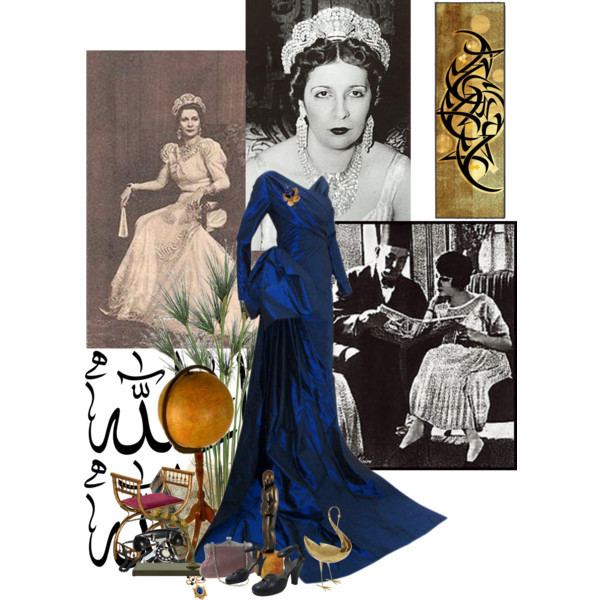 | ||
Tenure 26 May 1919 – 15 March 1922 Tenure 15 March 1922 – 28 April 1936 Father Abdul Rahman Sabri Pasha Children Farouk of Egypt, Fawzia Fuad of Egypt, Fathia Ghali, Faiza Rauf, Faika of Egypt Siblings Emine Sabri, Hussein Sabri, Mohamed Sherif Sabri Similar People | ||
Nazli sabri
Nazli Sabri (Arabic: نزلي صبري / نازلى صبرى; Turkish: Nazlı Sabri; 25 June 1894 – 29 May 1978) was the first Queen of Egypt from 1919 to 1936 as the second wife of King Fuad.
Contents
- Nazli sabri
- Nazli Sabri
- Early life
- Marriage to Fuad
- Later years
- Legacy
- Titles and styles
- National dynastic honour
- Foreign honour
- References
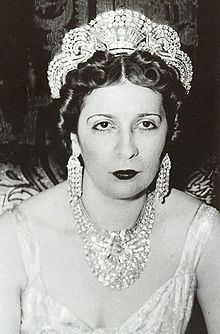
Nazli Sabri
Early life

Nazli was born on 25 June 1894 into a family of Turkish and French origin. Her father was Abdur Rahim Sabri Pasha, minister of agriculture and governor of Cairo, and her mother was Tawfika Khanum Sharif. Nazli had a brother, Sherif Sabri Pasha, and a sister, Amina Sabri.
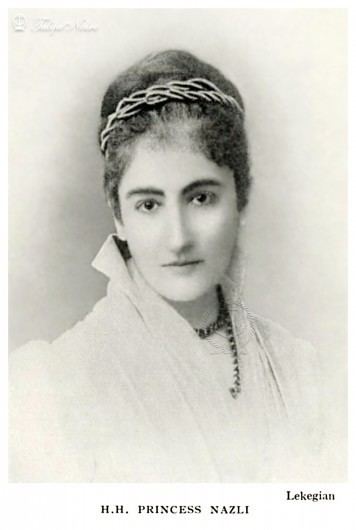
She was the maternal granddaughter of Major General Muhammad Sharif Pasha, prime minister and minister of foreign affairs, who was of Turkish origin. She was also a great-granddaughter of the French-born officer Suleiman Pasha.
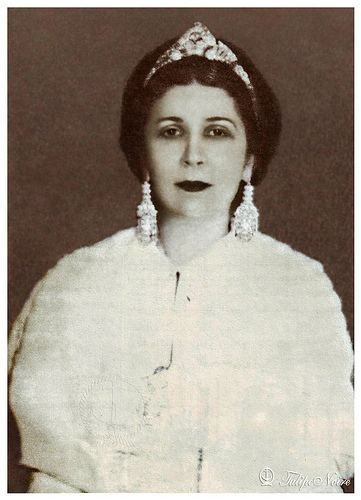
Nazli first went to the Lycée de la Mère-de-Dieu in Cairo, and later to the Collège Notre-Dame de Sion in Alexandria. Following the death of her mother, she and her sister were sent to a boardingschool in Paris, France, for two years. After returning, Nazli was forced to marry her Turkish cousin, Khalil Sabri. However, the marriage ended in divorce after eleven months. After the separation, she stayed at the house of Safiya Zaghloul where she met Saeed Zaghloul; the two were engaged until Saeed broke up with her during his exile with his uncle Saad Zaghloul following the 1919 revolution.
Marriage to Fuad
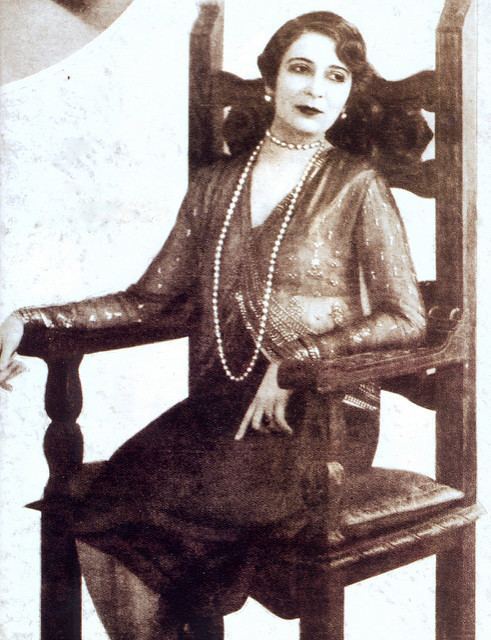
The Sultan of Egypt, Fuad I first saw Nazli at an opera performance. On 12 May 1919, Fuad proposed to her, although he was 25 years her senior. On 24 May 1919 Nazli married Sultan Fuad I at Bustan Palace, Cairo. It was the second marriage for both Nazli and Fuad. She later moved to the haramlek in the Abbasiya Palace. She was under pressure from her husband to produce a son, and was warned that she would confined to the haremlek if she did not do so. After the birth of their only son, Farouk, she was allowed to move into Koubbeh Palace with her husband. When Fuad's title was altered to King, she was given the title of Queen. She then had four daughters: Fawzia, Faiza, Faika, and Fathiya.

Restricted to the palace throughout most of Fuad's reign, she was permitted to attend opera performances, flower shows, and other ladies-only cultural events. As her upbringing had left her remarkably educated, cultured and emancipated for an Egyptian woman of the time, she found this prescribed existence backward and stifling. It was said that whenever the royal couple fought, she was slapped by the king and confined to her suite for weeks. It was also alleged that she tried to commit suicide by overdosing on aspirin.
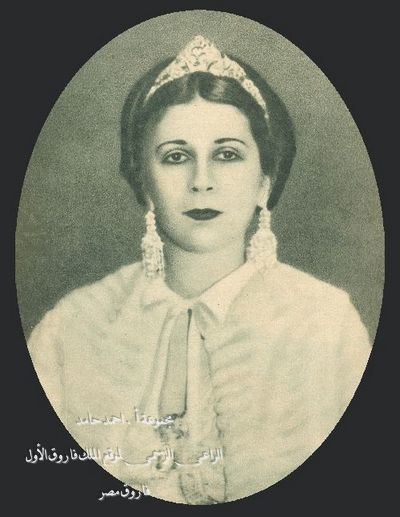
Nazli accompanied the king during part of his four-month tour of Europe in 1927, and was much fêted in France because of her French ancestry. With the inauguration of Parliament in 1924, she was among the royal attendees at the opening ceremony, seated in a special section of the guest gallery.
Later years
Following the death of King Fuad in 1936, her son Farouk became the new King of Egypt, and she became the Queen Mother. Her brother Sherif Sabri Pasha served on the three-member Regency Council that was formed during Farouk's minority. In 1946, Nazli left Egypt and went to the United States for treatment for a kidney ailment.
In August 1950, King Farouk deprived the Queen Mother, and her daughter Princess Fathia of their rights and titles. This was due to latter's marriage, which Nazli supported, but was against Farouk's wishes, to Riyad Ghali Effendi, a Coptic Christian. Nazli later converted to Christianity, changing her name to Mary-Elizabeth.
In 1955 Nazli purchased, for $63,000, a 28-room mansion in Beverley Hills, were she lived with Fathia, her son-in-law, and their two children, and lead an active social life.
In 1965, Nazli attended the funeral of Farouk, in Rome.
Following Fathia's divorce, Nazli moved to a small apartment in Westwood, Los Angeles, where Fathia eventually joined her after temporarily moving to Hawaii.
To meet debt demands, in 1975 Nazli sent her principal jewellery to auction at Sothebys, including a magnificent art deco tiara (720 diamonds weighing 274 carats) and matching necklace commissioned in 1938 from Van Cleef & Arpels. They sold for $127,500 and $140,000 respectively. However, Nazli and Fathia still ended up in bankruptcy court. In 1978, Fathia's jewellery was also sold to meet debts.
In 1976, Nazli sent a request to the then President of Egypt, Anwar Sadat, that passports be provided to her and Princess Fathia to give them right of return to Egypt. Eventually she settled in the US, due to her painful illness. She died on 29 May 1978 in Los Angeles, California.
Legacy
In 2008, Rawia Rashed published a book about Queen Nazli, titled Nazli, Malika Fi El Manfa (Nazli, A Queen in Exile). Based on this book, an Egyptian TV series provided an account for the life of Queen Nazli, Queen in Exile, starring Egyptian actress Nadia Al Jundi in 2010.
Queen Nazli's art deco necklace reappeared at a Sotheby's sale in December 2015.
